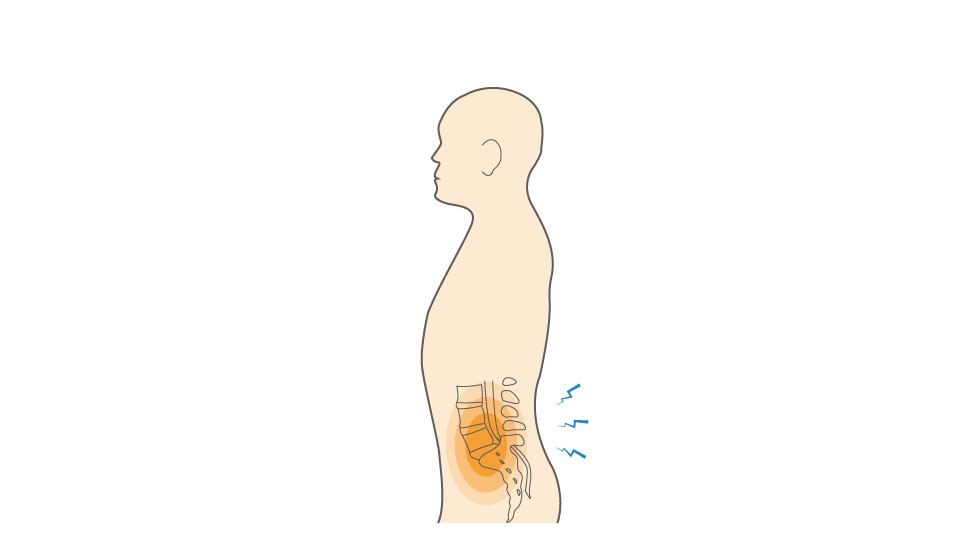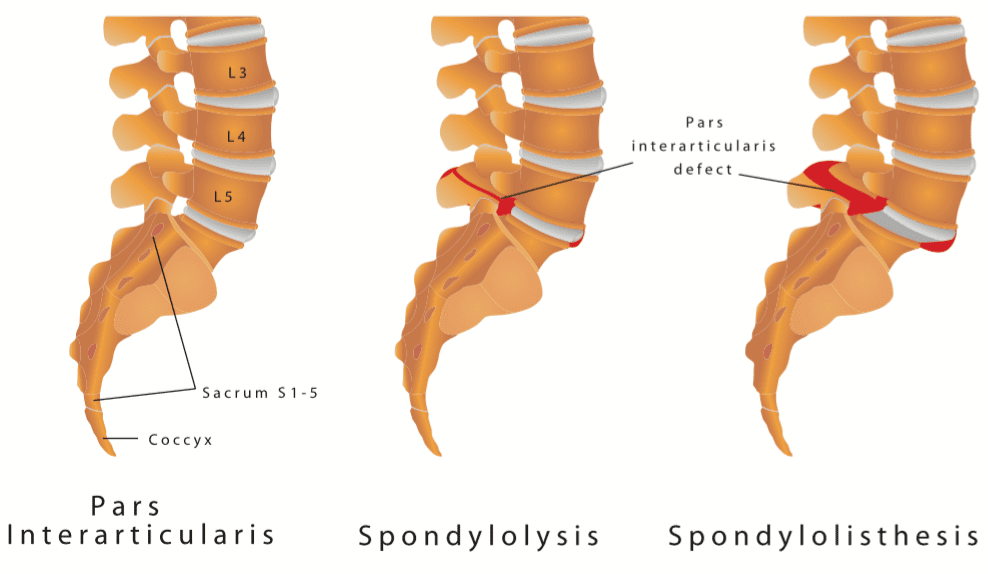Spondylolysis (spon-dee-low-lye-sis) and spondylolisthesis (spon-dee-low-lis-thee-sis) are two different but related conditions that refer to defects in the vertebrae, the bones that make up the spine. Spondylolysis is a fracture of the thin parts of the vertebrae that link them together. Spondylolisthesis is an injury that happens when a vertebra becomes so weak that it slips out of its place in the spine. Both conditions are common causes of low back pain, particularly in young athletes who play sports that place stress on the lower back.
Spondylolysis/Spondylolisthesis Symptoms & Treatment Options
Spondylolysis and spondylolisthesis are two different but related conditions that refer to defects in the vertebrae, the bones that make up the spine. Spondylolysis is a fracture of the thin parts of the vertebrae that link the front and back together. If that fracture separates, it allows the vertebra to slip, which is called a spondylolisthesis. Both conditions are common causes of lower back pain, particularly in young athletes who play sports that place stress on the lower back.
Overview
Overview

What causes Spondylolysis/Spondylolisthesis?
Spondylolysis and spondylolisthesis are typically caused by playing sports that require repetitive overstretching (called hyperextension), such as football or soccer. Younger athletes are at greater risk for these injuries because their spines are still developing. Genetics may cause some people to have thinner vertebrae, making them susceptible to these injuries. An acute trauma to the lower back can also be a cause.
Spondylolysis and spondylolisthesis are most common in these sports:
- Soccer
- Diving
- Gymnastics
- Football
- Weightlifting

Symptoms
The most common symptom of these injuries is low back pain, but for some people, there may be no symptoms at all. Young athletes with spondylolysis or spondylolisthesis usually see symptoms around the age of 15-16. Common symptoms also include:
- Pain in the lower back that feels like a muscle strain
- Pain that spreads to the buttocks and thighs
- Pain that gets worse with physical activity
Athletes with severe slippage of the vertebrae (spondylolisthesis) may experience tingling or numbness due to pressure on the nerves.
When to see a doctor
You should bring your child to their doctor if they experience lower back pain or related symptoms or suffer an acute injury to their lower back. The doctor will first want to know about their physical activities. During a physical examination, he or she will look for signs of tenderness and test their range of movement. They may look to see if there are any issues with your child’s gait or how they stand. X-rays or other imaging tests may be taken to confirm if there is a fracture of a vertebra. Imaging tests also help doctors evaluate how much slippage has occurred, which they often describe as “low grade” or “high grade.”
Non-operative treatment
Non-operative treatment is usually effective for cases of spondylolysis and low grade spondylolisthesis. Examples of conservative treatment include:
- Rest from sports that place stress on the back
- Nonsteroidal anti-inflammatory drugs (NSAIDs), such as ibuprofen and naproxen, for pain relief
- Wearing a back brace to limit movement and promote healing of the muscles and bones of the lower back
- Physical therapy for muscle stretching and strengthening
Try these exercises to help address your condition:
Below is a PDF of the Exercise Program
Surgical Treatment
Your doctor may recommend a surgical procedure if your child has high grade spondylolisthesis or if conservative measures are not effective in relieving symptoms. Your doctor will advise if surgery is an option you should consider.
Recovery
Most athletes recover well from spondylolysis and spondylolisthesis. They can expect to return to playing their sport when symptoms have resolved and they have regained a full range of motion. Doctors may recommend a gradual return to play, with strengthening exercises and follow-up visits to ensure a full recovery.
GET BACK TO WHAT YOU LOVE. FASTER
Frequently Asked Questions
Who is most at risk for developing these spinal conditions?
Young athletes, especially those involved in sports that put repeated stress on the lower back—like gymnastics, football, or weightlifting—are more prone to developing these conditions.
What are the common symptoms of spondylolysis and spondylolisthesis?
The most common symptom is lower back pain, usually more on one side, which may worsen with activity especially with bending backwards. In some cases, there may also be stiffness, muscle tightness, or difficulty standing or walking properly.
How are these conditions diagnosed?
Doctors typically begin with a physical exam and a review of physical activity history. Imaging tests like X-rays, CT scans, or MRIs are often used to confirm a fracture and determine the degree of vertebral slippage.
When should someone see a doctor for back pain related to these conditions?
Medical attention should be sought if a child or adolescent experiences lower back pain, either after an injury, or if the pain persists for a while especially if it is localized to one area of the back and is worsened by bending backwards.

